“Toad” the hawk with a mysterious identity
- Simon Thomsett

- Oct 30, 2021
- 5 min read
The last few weeks have been characterised with very little sleep and tending to a baby who needs to feed every few hours, go to the lavatory almost the same number of times and yell for warmth, especially throughout the night. My guess is that the reader is well aware that I am not looking after a human baby…but a baby hawk. Of what species I did not know.
I received it as a tiny 32g fluff ball that would fit in the palm of my hand. Anne Marie Gordon from Nanyuki sent me some photos and so small was it that it could well have been a Gabar Goshawk. It also had a nose like one. I like relying on tiny physiological details and one photo showed me it had a small raised island in a near round nostril…though it did not have a punk hairdo.
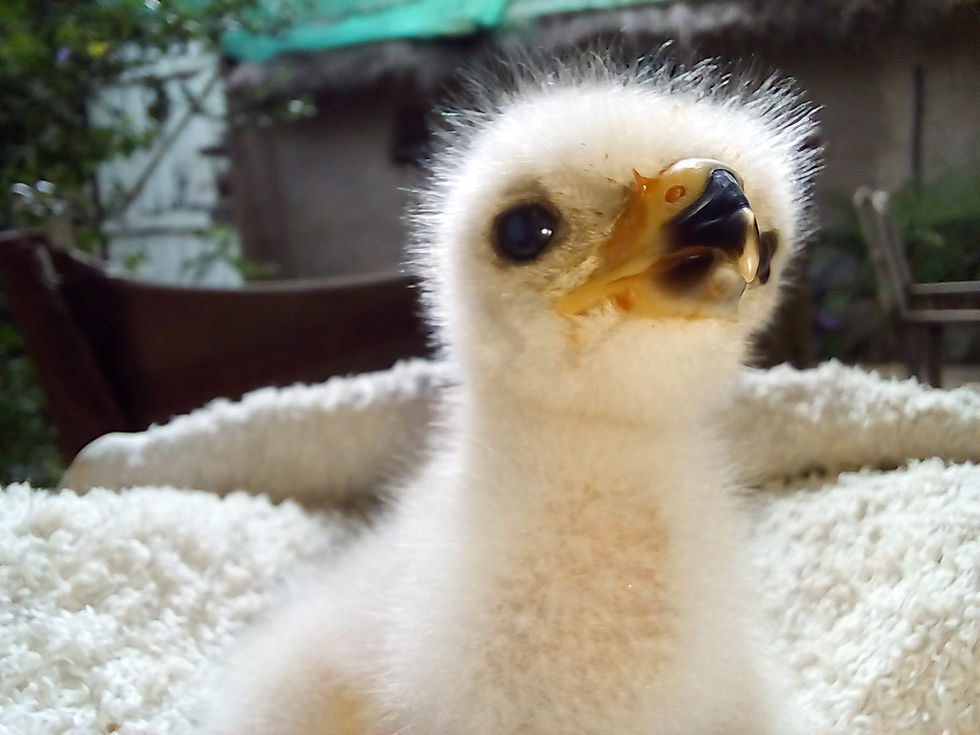
Anne Marie had done a very good job to keep so small a chick alive especially as it fell from a nest over 20m high…disturbed by an Augur Buzzard. A few days later it arrived in the front seat of a micro-light plane piloted by Alain Feraut and accompanied by a finger puppet as large as it.
It is a very fussy eater!
Soysambu Raptor Centre is (thankfully for raptors) not on the electricity grid and this means that warmth has to come from an old fashioned but trusty kerosene lamp. Many years ago I resorted to kerosene lamps when working on Cain and Abel management of the very rare Madagascar Fish Eagle. We had a big and fancy solar water system on the edge of a pristine fresh water lake near the west coast and it was supposed to pump heated water into pads during the night. Like most complicated things it didn’t work and I resorted to our Kenyan Jua Kali methods. So I have total faith in kerosene lamps, laundry baskets, towels a hot water bottle and a piece of aluminium foil…except for the fact it needs maintaining all night long and you have to sleep with it by your head. Breathe in that exhaust all night and you wake up a bit muddled.
I am not good at naming the birds and I have a small repertoire for chicks and these include Sprog, Pooh and Toad. This one was given the temporary name of Toad because it looks like one. It is sure to change, to what I do not know.

Toad grew at an alarming pace and I sent photos to experts and no one was very sure what it was. My suspicions were aroused when Toad would defecate like a mortar…ejecting with so much force as to topple over on to its face. “Humm” I thought studiously measuring the distance…"could this be an accipiter and not a buteo?"
Now accipiters all have long thin middle toes, and buzzards short fat middle toes. All African Accipiters except the African Goshawk and the Shikra…which have comparatively short middle toes, have long middle toes. In the first few days Toad had a definite short middle toe. Accipiters too have a distinct web from the middle toe to the outside toe. Toad did not. After about a week I noticed the middle toe catching up. Then a few days later the very accipiter-like knobby protrudence on the underside of the middle toe became obvious. Pulling Toad’s toes around, despite noisy objections, I saw that the web was more distinct. It dawned on me that the embryonic “hawk” standard continued to evolve…after hatching.
These small features define a sparrowhawk’s biology and you’d have thought they were so profound that these are completed as an embryo. But maybe not. Perhaps I’m making too much of it as I chopped and changed Toad’s identity a few times and wasn’t sure what he/she was. Putting a nerdy connotation on it to cover my embarrassment may well be true, but it did make me kick myself for not having thought of it earlier. The shape changing foot morphology after hatching…I mean. It’s enough to hand out PhDs all round if true. Maybe next time round I will take the time to measure these changes.

Toad is taking up so much of my time that I cannot get away to buy groceries let alone build and chase things up. As luck would have it, in came a young Little Sparrowhawk from Nick Trent and then in came a very sick and depressed Steppe Buzzard. These slammed the door shut on any personal shenanigans or work related expeditions…and I will have to be a nanny for a while.
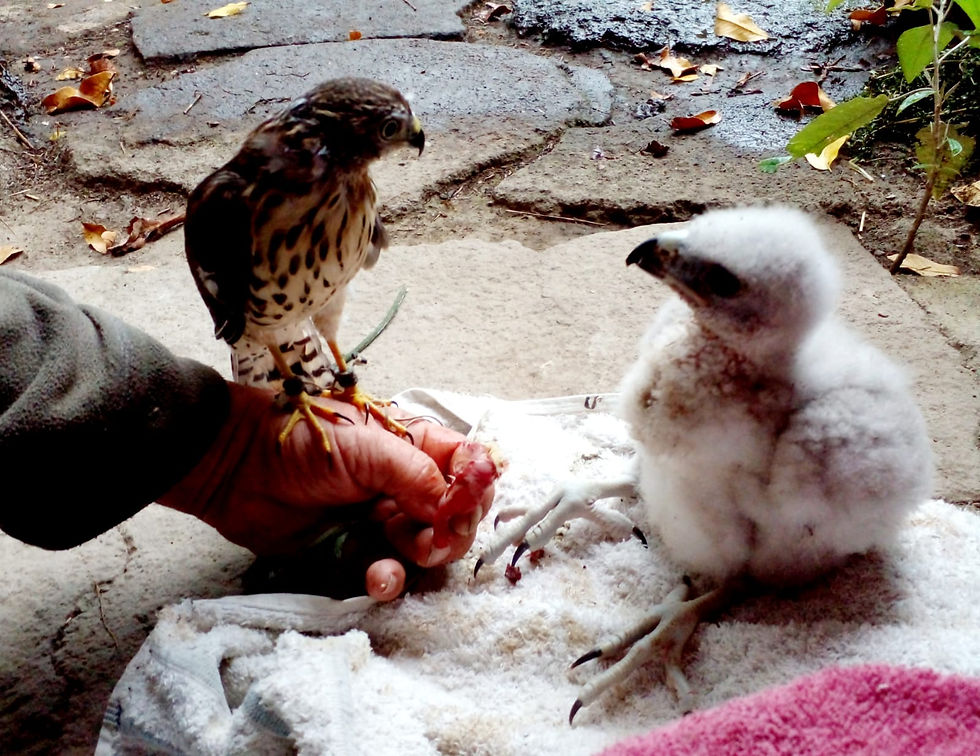
A week after arrival Toad developed tremors and has had about half a dozen fits. This is serious and again a feature more of accipiters than of buteo. Not that it is any consolation for these tremors can get worse and be fatal. I suspect she is a female…and I now take great care to insure added calcium and thiamine intake…and direct sunlight to activate the B1. I did make a conscious effort to expose her to sunlight each day…but within my courtyard, which has 50% shade netting. I now make sure she has full sunlight for at least an hour each day….taking care she does not get too hot. Because she is still with us and the intervals between the tremors are much longer I hold out hope that we have avoided it.
Simon explains Toad's behavioural development while feeding it.
Cavina school pupils from Nairobi helped feed our newest arrival when visiting Soysambu Raptor Center. And as small as she is, Toad is doing a great job at educating them about how awesome raptors are and how important it is that we protect them and their habitat.
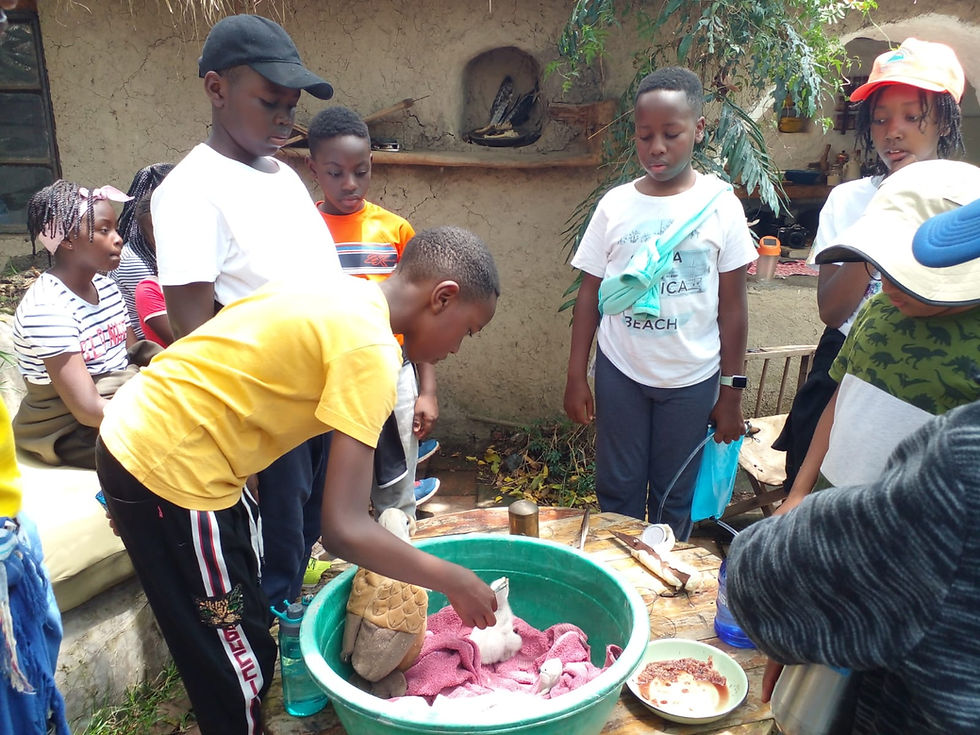
Rearing raptor chicks from day one will of course mean that she will most likely be a human imprint. “Better a live imprint than a dead one” is my rather coarse maxim for fellow rehabbers…but I do have a plan. In a few days I will place her in a shed with an adult female Augur Buzzard…who has two prosthesis legs and can do no harm. Just her presence…and my absence, will be enough to “double imprint” her. The acute reader will no doubt note the obvious potential for a Black Sparrowhawk (for that is what Toad is) to imprint on an Augur Buzzard. I doubt this as I will then take great pains to make sure she hangs out with my now adult Black Sparrowhawk. It’s a juggling act…and it has no guarantee.
To go through all this effort to save the life of an individual whose species is very heavily persecuted…does go through my mind on these sleepless nights. The bottom line is that I enjoy it and I enjoy solving the problems encountered and one day if and when she does fly free, chase pigeons and enjoy herself I will be very happy.
Wish to learn more, visit our website and join us on Facebook and Instagram.
Kenya Bird of Prey Trust
Understand - Protect - Restore











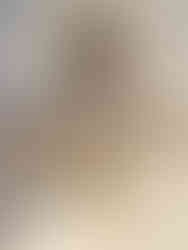



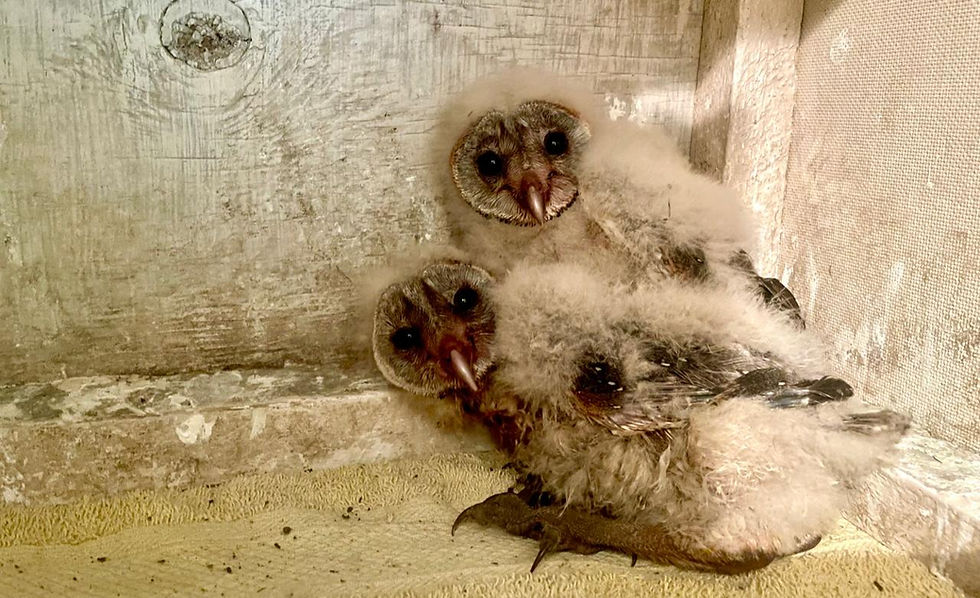


Comments